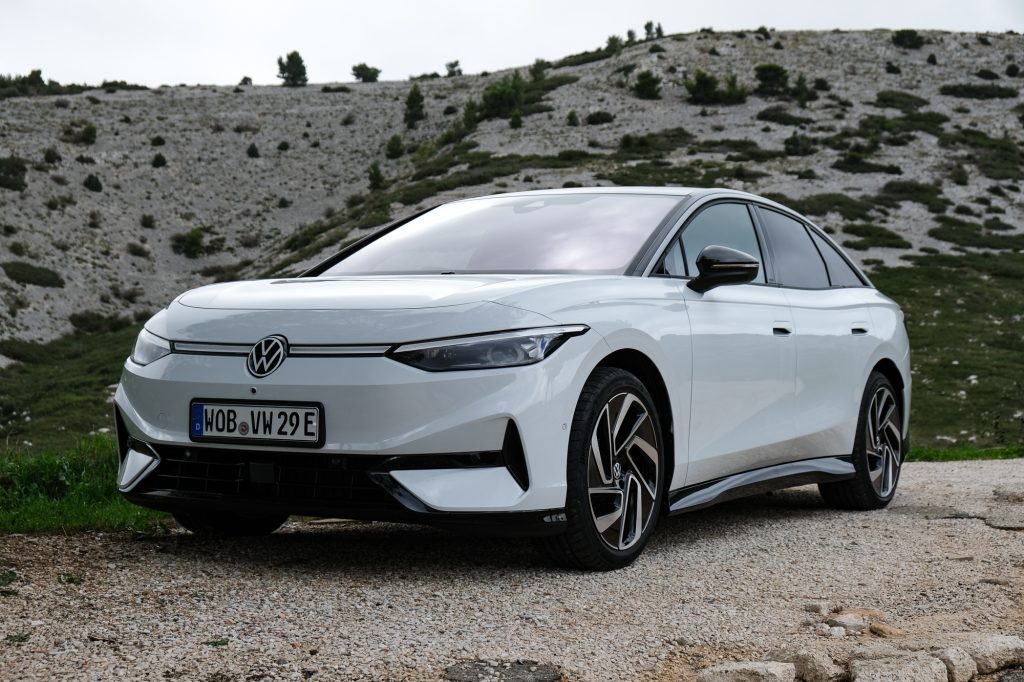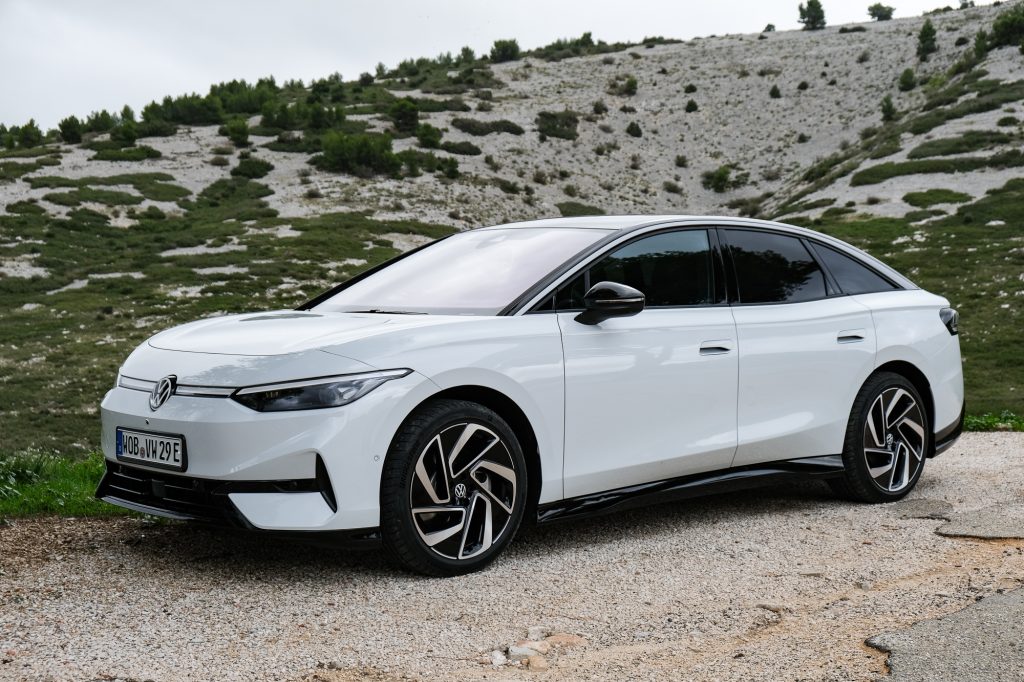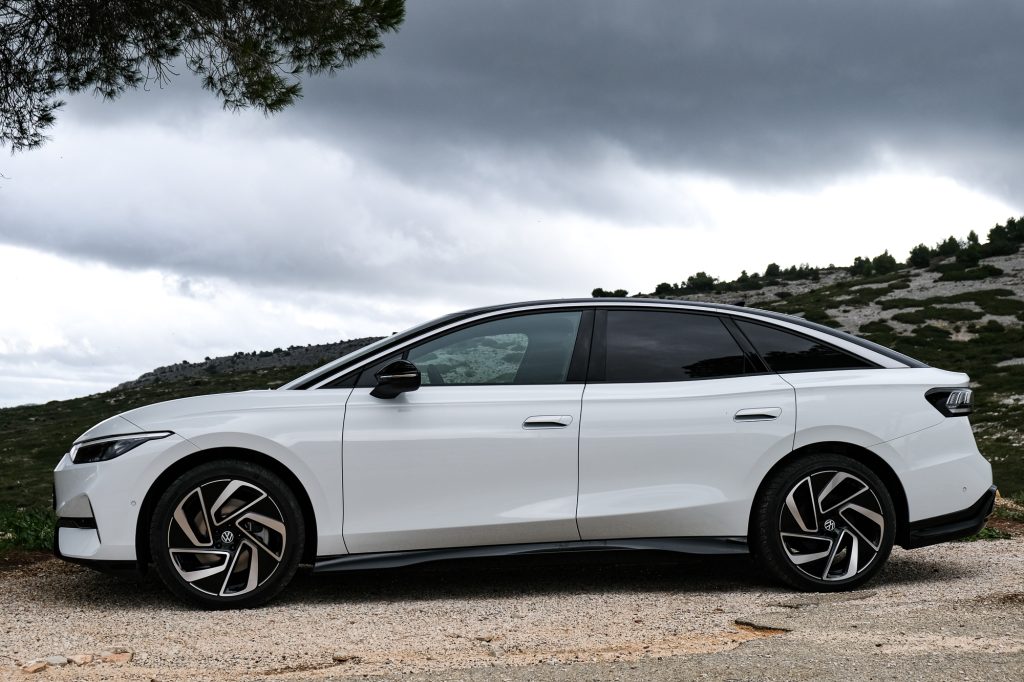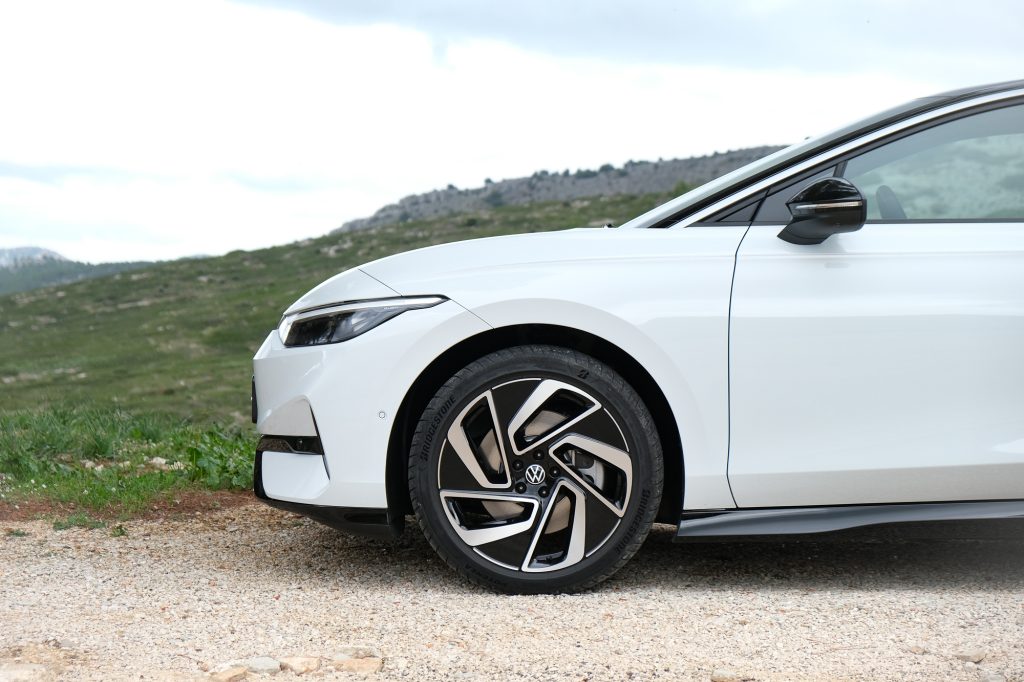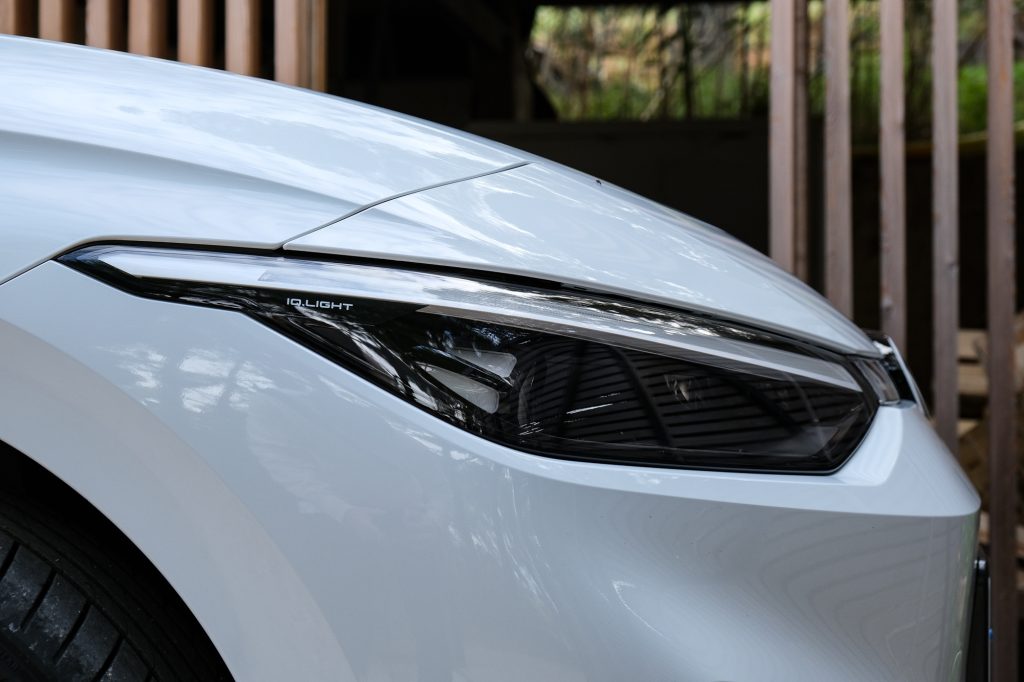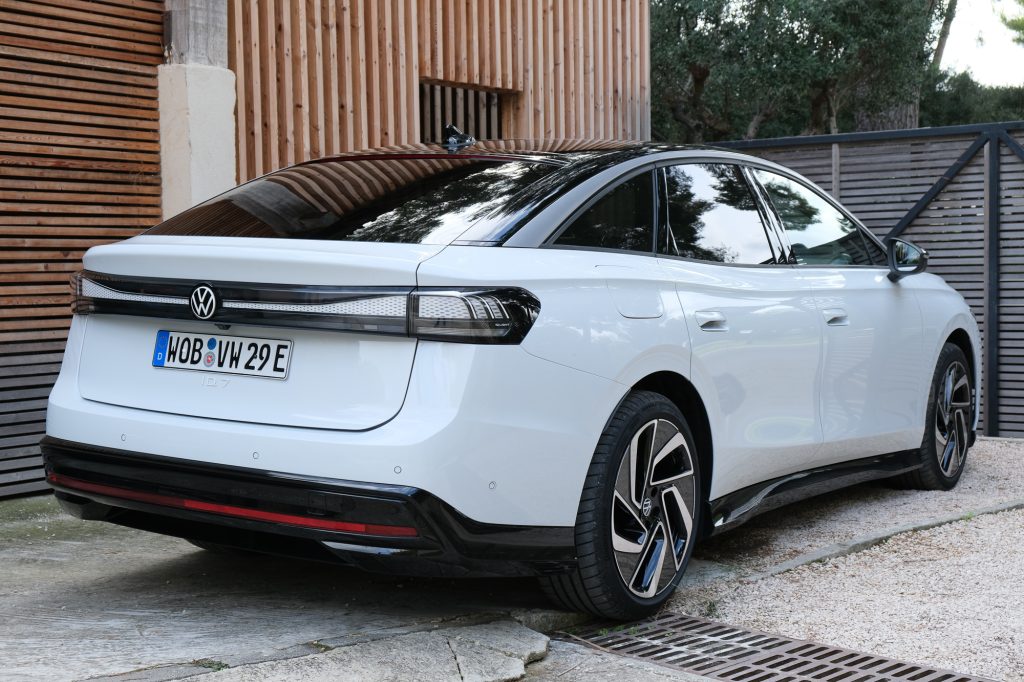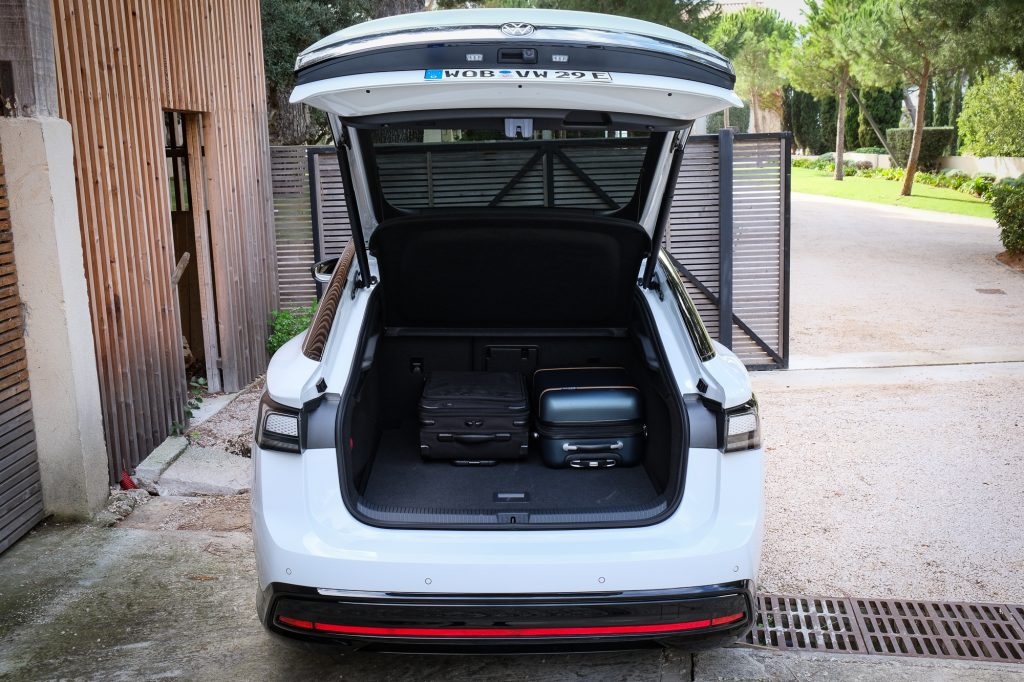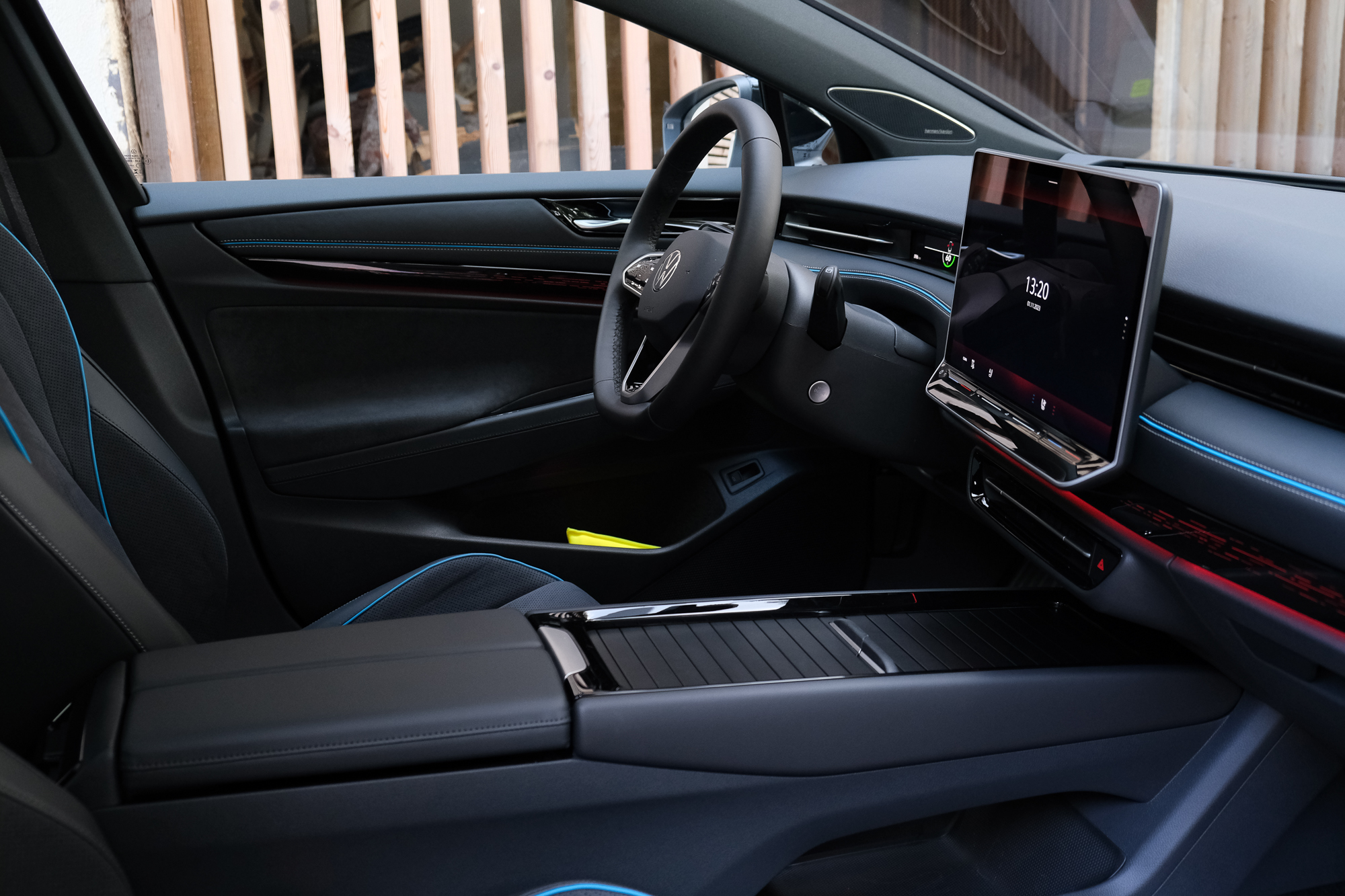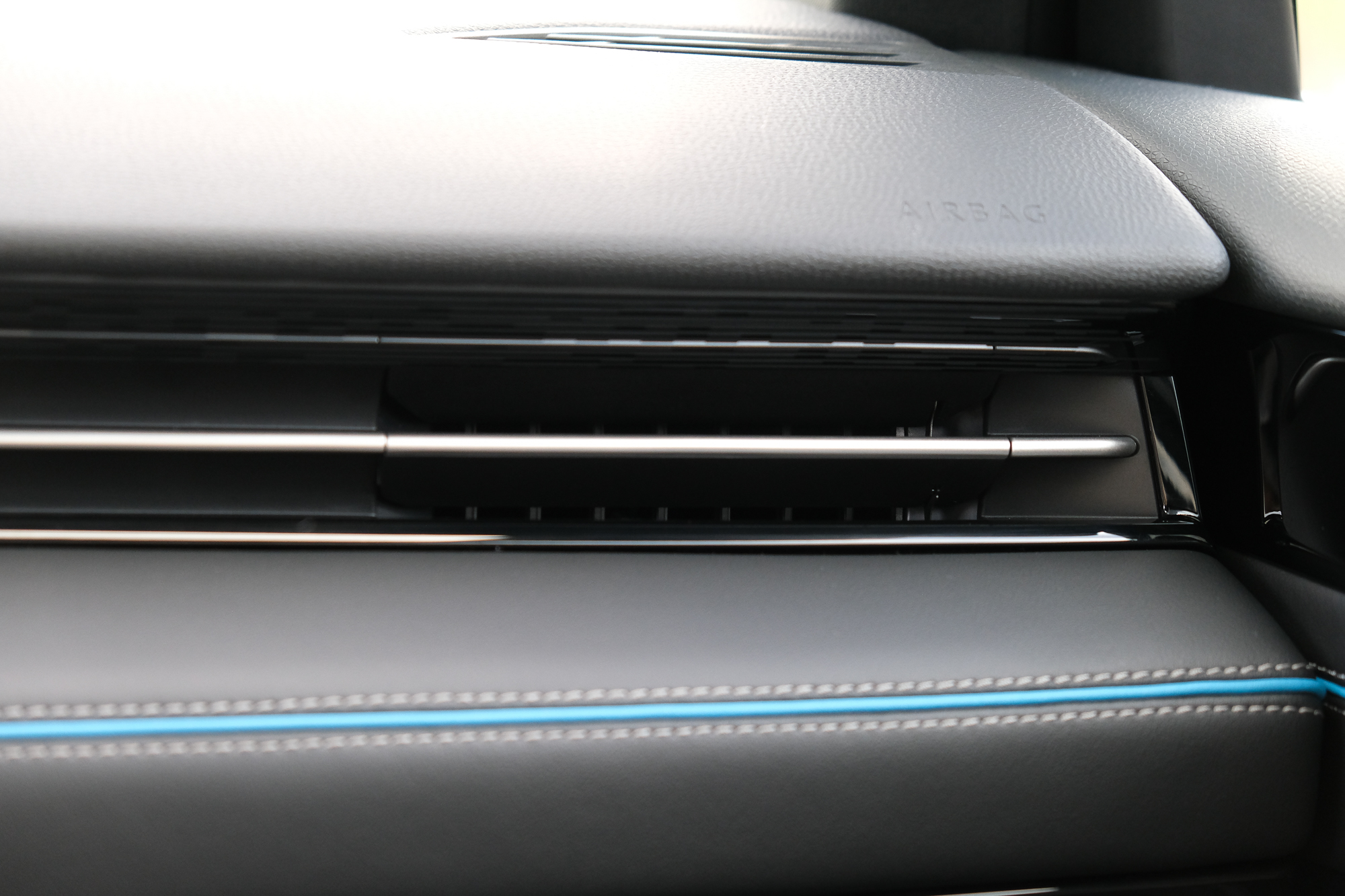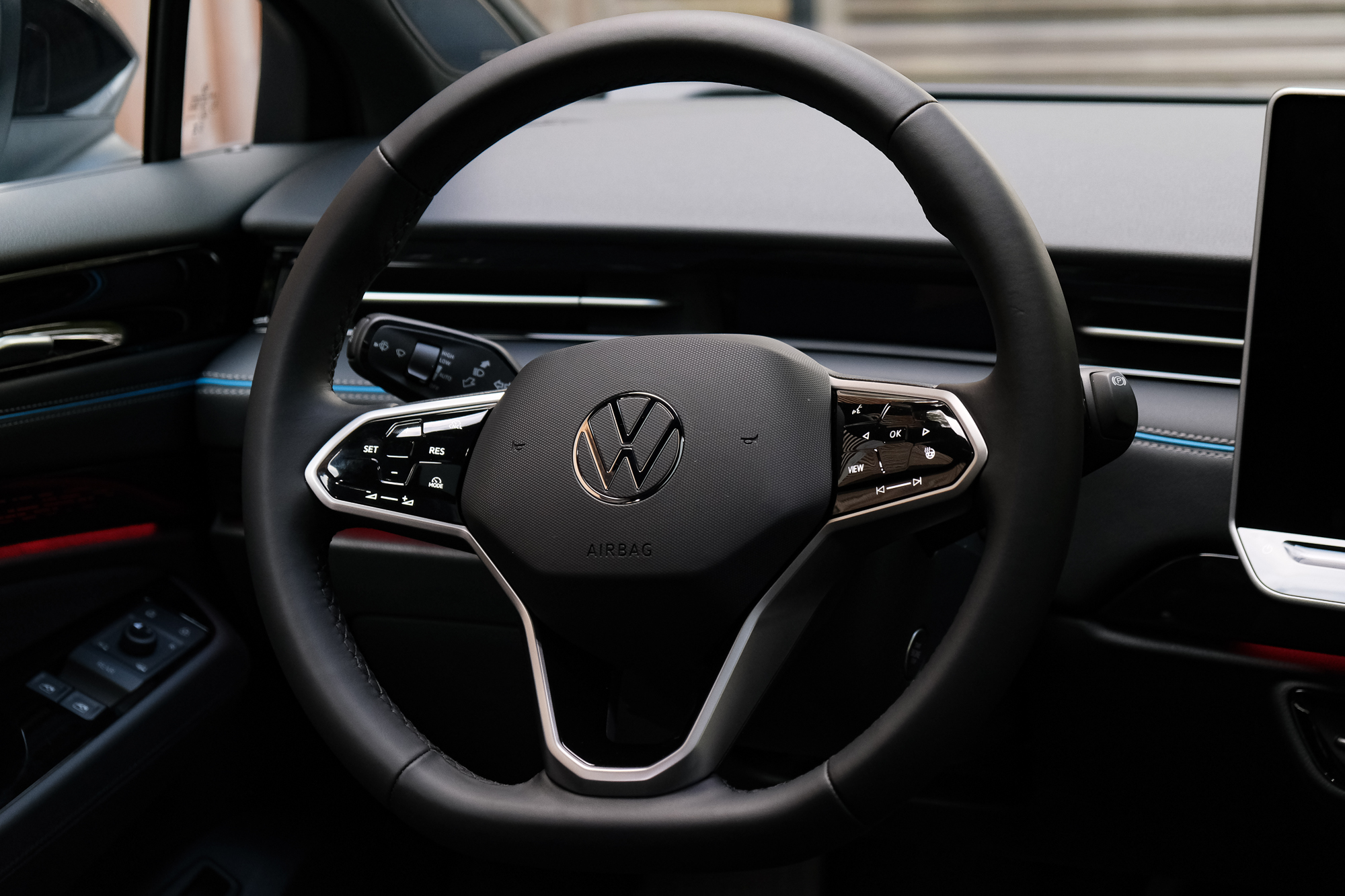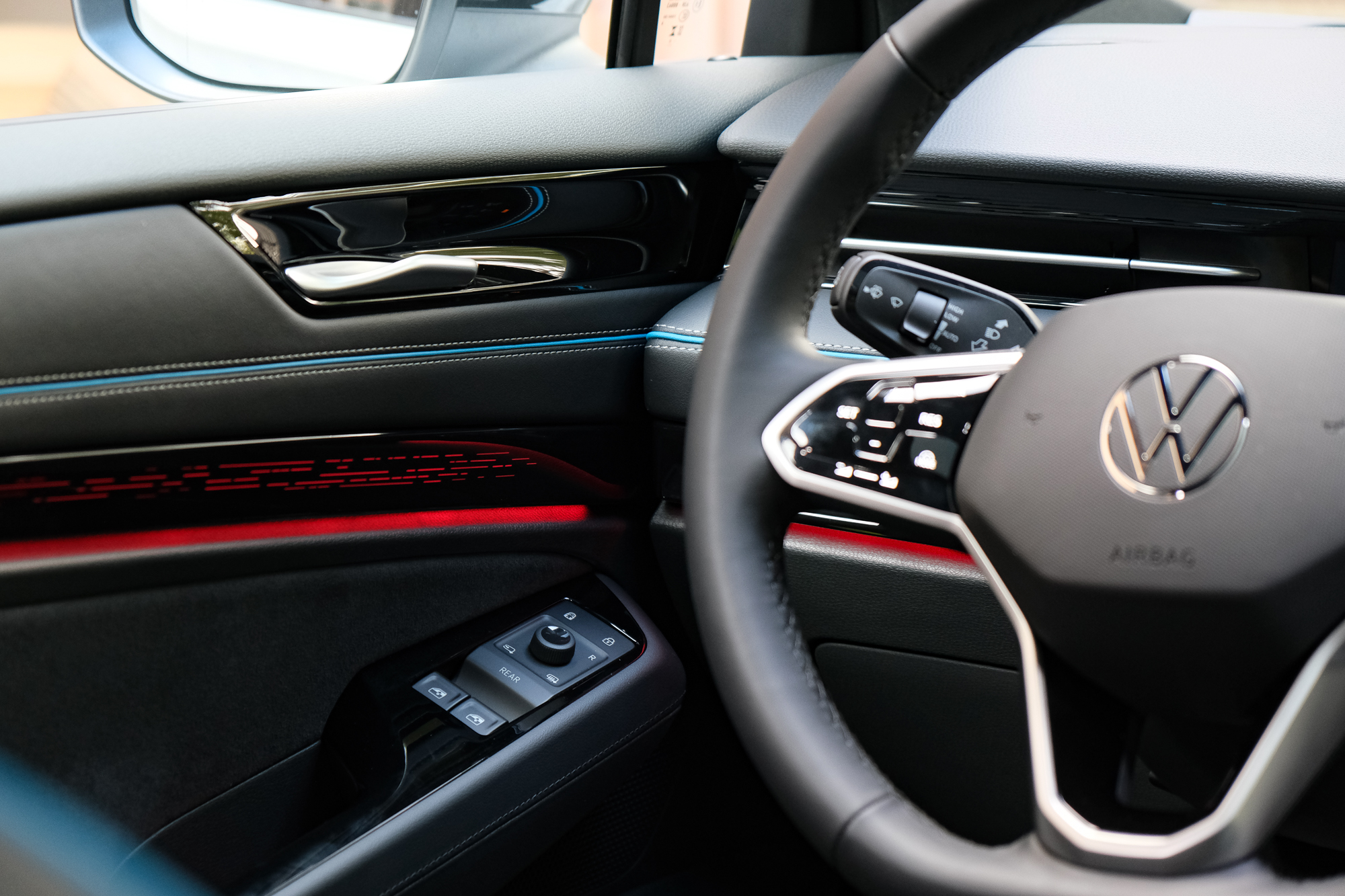
In the age of silky-smooth and quiet electrification, big screens, cameras, and power everything, what truly defines a luxury car? It’s a question I found myself asking after two days with the Volkswagen ID.7, the new mid-size EV sedan from Wolfsburg. It’s not a luxury car, per se, but so much about it does feel luxurious. Between the amazing seats, plush ride, and abundant tech, this is a car that doesn’t want for much.
Philosophical musing aside, VW has found the proverbial sweet spot in the ID.7 — a nice but not-too-nice family car I’d genuinely love to live with. While I’m still not sure I know what makes a luxury car a luxury car anymore, the ID.7 prompts what is perhaps a better question, “What else do you really need in a car?” And maybe true luxury is the absence of need.
VW ID.7 specs and figures
- Model: Volkswagen ID.7 Pro
- Battery: 82 kWh (77 kWh available)
- Range: 386 miles (WLTP, no EPA yet)
- Charging: 11 kW AC onboard, up to 175 kW DC (CCS)
- Motor configuration: Single motor, RWD
- Power / torque : 282 hp / 402 lb-ft
- Weight: 4788 lbs
- Seating: 5-passenger
- Price: Unknown
- Release date: Late 2023 / early 2024
- Other models: GTX (AWD sport model), Touring (wagon — not coming to the US)
The luxury question
Is luxury about ride quality? If so, the ID.7 has it in spades, with adjustable adaptive dampers and quiet, confident road manners. Is luxury about space? The ID.7 and its elongated 117-inch wheelbase puts it closer to a Mercedes EQE than a Passat by layout, and a total length of over 195 inches makes it the longest sedan produced by the brand since the Phaeton. Is luxury about whizz-bang features? The ID.7 has heated and cooled massaging front seats, motorized climate control vents, VW’s most ambitious ADAS system yet, and a vast 15-inch center display (complete with HUD nav integration for the driver). Is luxury about power? The ID.7 has, well, not quite so much of that — at 282 hp and 402 lb-ft of torque, it’s more than adequate to the task of highway passes and on-ramp hustling, but typically conservative Volkswagen.
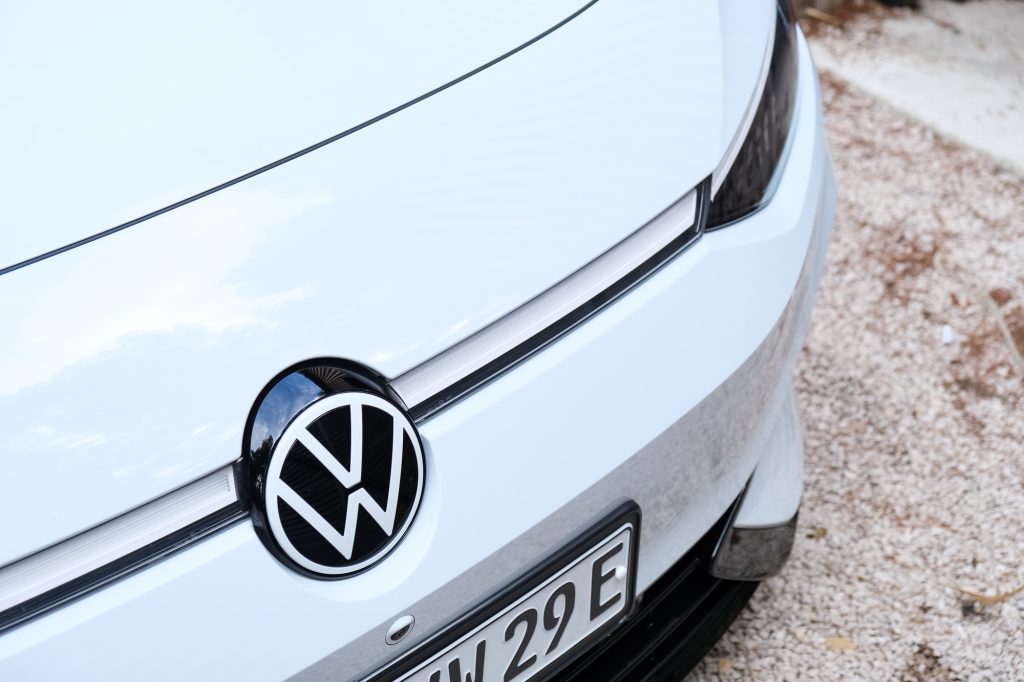
We were in quite luxurious surrounds for the ID.7’s big debut, with Volkswagen hosting journalists in the south of France — in my view, an attempt to associate the ID.7 with VW’s most bougie clientele. (Travel, accommodations, and delicious French desserts were provided to Electrek by VW.) And that leads to the one big thing Volkswagen wasn’t talking about: Money. We have no idea what the ID.7 will cost when it comes out. Based on the fully loaded ID.7 Pro trim we drove, I suspect the answer could be a pretty penny once all the order sheet option boxes are ticked. More basic configurations will be available, but none of those cars were on hand to test. Pricing is easily the biggest concern for any EV on the market, arguably even more important than form factor and range at this point to most buyers. Without that data point, the ID.7 is a bit tricky to place at the moment. But we’ll try.
Exterior & interior: A bigger, better Arteon
One way to couch the ID.7 is relative to its position in the greater VW portfolio. But even this proves a bit weird. Some of those who drove it were apparently (according to VW) keen to liken the ID.7 to an electrified Passat. But the ID.7 has a wheelbase a full seven inches longer than VW’s sedan of the people, making it a size class larger. While parking the two may be similar (the Passat is only 2 inches shorter overall), the ID.7 is inarguably a bigger vehicle to inhabit. And if you’re doing Model 3 math, stop now: The ID.7 is far more proximate to the Model S by wheelbase, length, and passenger space.
The front seats of the ID.7 offer over 40 inches of headroom — three inches more than a Passat or Arteon — making for an open and airy cabin feel. Cargo space is above average for an EV sedan, too. While there’s no frunk, the ID.7’s rear liftgate hatch has 530 liters of storage. That’s far less than a Model S (700 liters), but still a strong showing in the segment (e.g., the ID.7 is up 100 liters on the Mercedes EQE, and 40 liters on the BMW i5). Rear seat space also felt ample in the car, with more than enough head and legroom even for me, at 6’1″. It’s a true four-adult sedan; even five should be doable in a pinch. And if you fold down the rear seats, you’re ready for some medium-duty IKEAing.

As to how all that space translates to the exterior, this is not a compact car. But it’s not massive, either. At 195.3 inches, the ID.7 is only a bit longer than a Passat or Arteon, which are both smaller than electrified mid-size luxury sedans like the previously-mentioned EQE (196.9″) or i5 (199.2″). It’s by no means a difficult car to maneuver, either — getting the ID.7 up and down a very tight French manor driveway in the hills of Cassis was eminently achievable, especially with the aid of parking sensors and automatically activated exterior cameras.
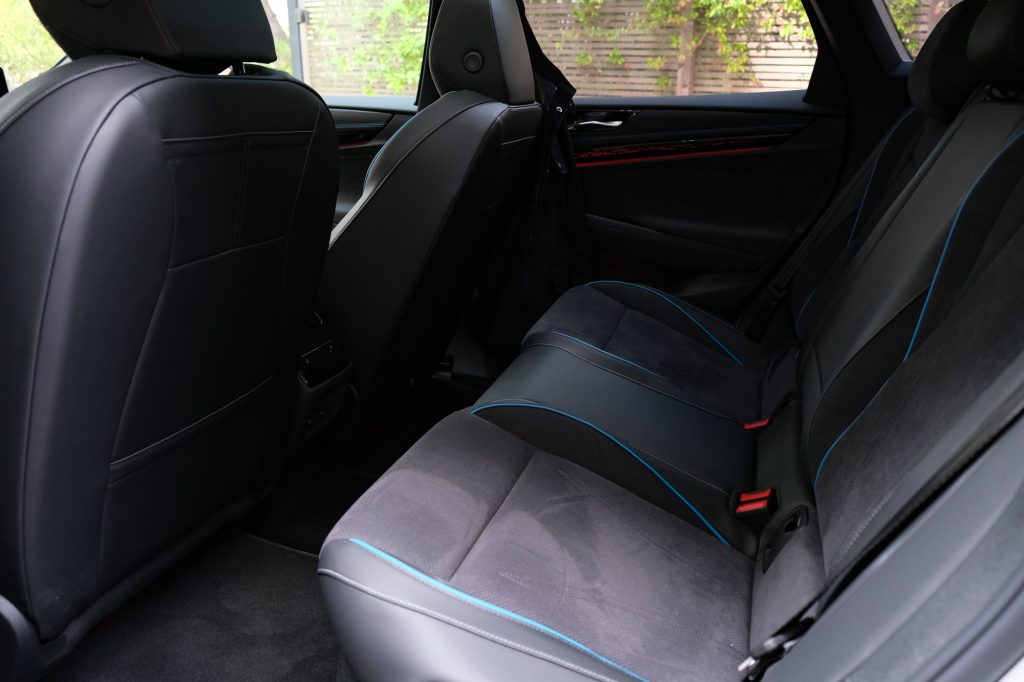
With that 282 horsepower responsible for moving 4788 lbs of ID.7, a 0-62 mph time of 6.5 seconds isn’t surprising. This is a relatively heavy vehicle, though the ID.7 is a lot lighter than a Mercedes EQE (5190 lbs) and meaningfully trimmer than the BMW i5 (4916 lbs), but those are also larger cars. By comparison, a Model S Dual Motor with its 100 kWh battery and AWD comes in around 4,560 lbs. Weight is a metric worth noting, as it impacts range, performance, and tire wear. That said, this makes VW’s range claim (386 miles WLTP) all the more impressive in context of the ID.7’s 77 kWh-available battery. Pound for pound, this is a very efficient car, at least on paper. In Europe, the ID.7 with attached hitch accessory will also be able to tow 1200 kg (around 2650 lbs).

Tech and features: An Audi in Wolfsburg clothing?
Going back to our initial “luxury” question, the level of equipment available in the ID.7 pretty quickly makes it evident that VW has no intention of letting its upmarket sibling in Ingolstadt have all the fun toys. If I may be so bold, the premium ergoActive seats in the ID.7 are a revelation in a Volkswagen product. They are really freaking good. The massage mode is powerful, and my codriver and I were both turning them back on after our 30-minute “pelvis activation” (yes, really) sessions had come to an end. They were also obscenely comfortable — sporty, a bit huggy, but very supportive and well-cushioned over the three or so hours we spent on the road. If you’re in the market for an ID.7, you’d be nuts not to spring for this upgrade. Heating and ventilation both work well, and there’s a “drying” mode that heats and ventilates the seat simultaneously in the event you’re feeling a bit schweaty.
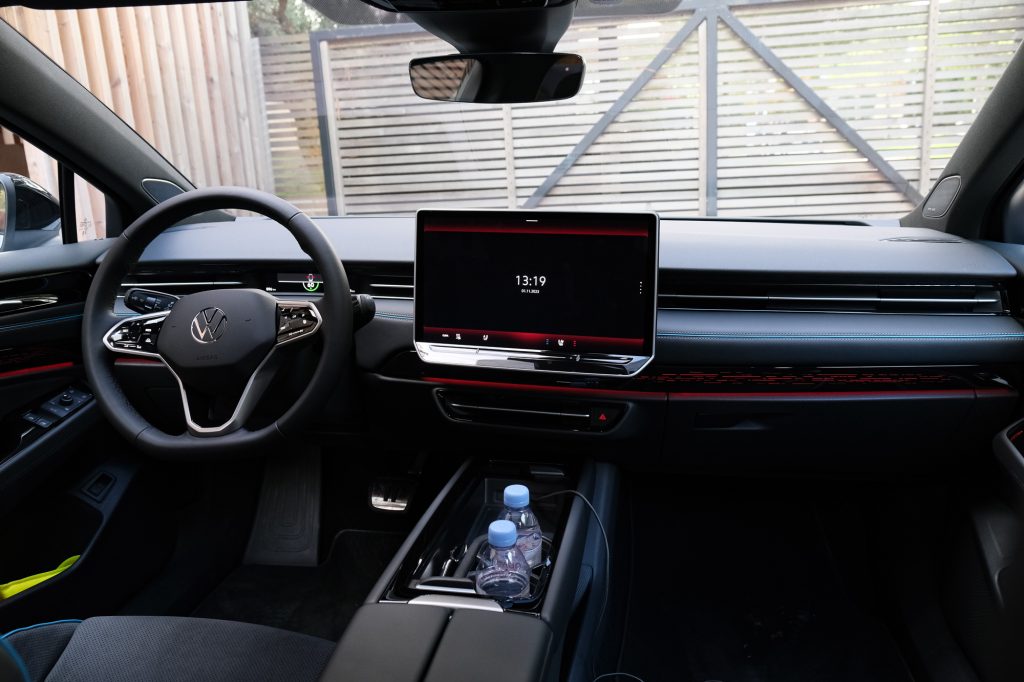
The rest of the interior is a luxurious place to be, too. The heated steering wheel is nice and chunky (and the capacitive controls seemed fine to me), and the new 15″ center screen is, at the very least, much easier to see. Interior lighting accents can be customized, most touch points feel like premium materials, and you get a Qi wireless phone charger and two 45W USB-C ports in the center console. There’s a passthrough storage area under the center storage cubby, too — no fake transmission tunnels here. And if you opt for it, the ID.7 can even be configured with a tinting and blurring panoramic glass roof. On a Volkswagen!
Of all the tech in the car, I was particularly smitten with the “augmented reality” heads-up display that VW will include as standard on all trims of the ID.7. It provides navigation tooltips so you can ignore the big nav screen entirely, keeping your eyes on the road. I want a manufacturer to write a white paper on driver focus and stress levels using something like this HUD compared to a center-mounted nav screen, because I’d have a strong hunch it positively impacts both.

The infotainment system uses the newest version of Volkswagen’s in-car OS, but I didn’t have the time to explore it in meaningful depth. Some quality-of-life tweaks to the homescreen make certain things like climate and seat controls more accessible (they’re along a permanent nav strip on the bottom of the screen), and you can customize a few shortcuts to apps along the permanent top bar of the UI to quickly get in and out of CarPlay, for example. It all seems fine, with interaction generally straightforward and performance being passable. I wasn’t a big fan of the built-in navigation UI — it’s visually busy — but Android Auto and CarPlay are available (including wireless mode), so you can use whatever mapping solution suits you best. Most folks will plug in their phones once and never look back. As for digital climate and seat controls, I’ve never been a fan, and I don’t think I ever will be. I understand this is a very attractive cost-cutting measure for the manufacturer, but it makes a multi-step process out of something that used to be straightforward and naturally tactile.
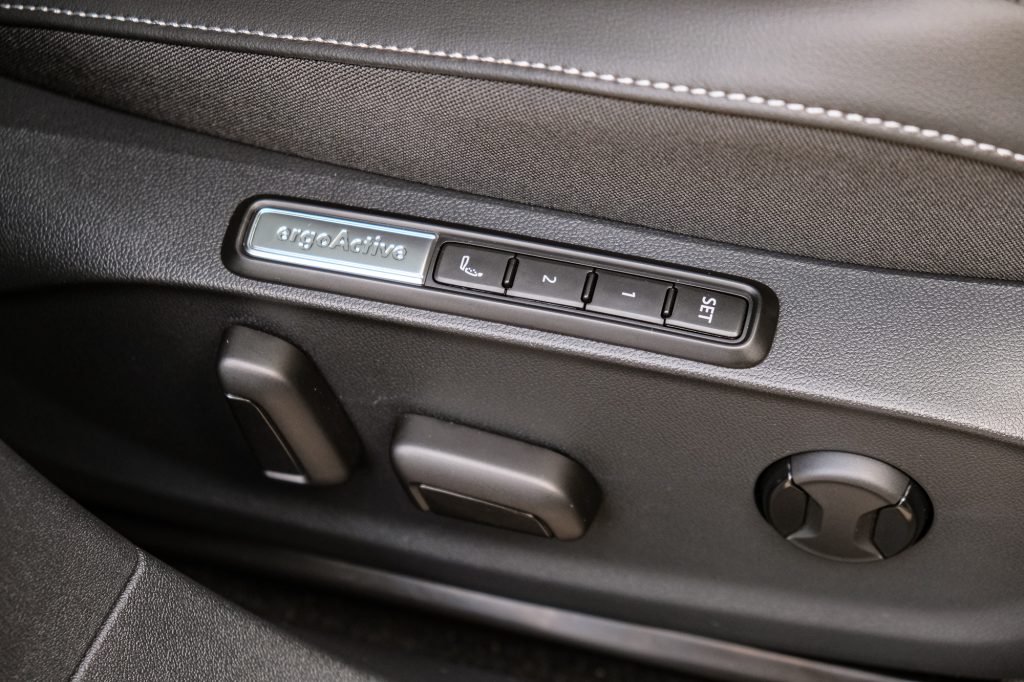
The VW “IDA” in-car voice assistant was about as refined as I’d expect of such a thing — and I should start by saying it’s not coming to the ID.7 in the US. In general, it seems to work OK, but IDA was inadvertently triggered many times on our test drive (don’t say “idea” in your Volkswagen because it will get… ideas), guaranteeing I’d turn it off in my own car on day one. I acknowledge there is likely some value from an accessibility standpoint to these interfaces for specific users. Still, the reality is that carmakers are just redoing the work Apple, Google, and Amazon have already done so much better than they ever will, and it makes all of these systems an inferior experience compared to the smartphones and smart speakers we all use every day.
On climate control, Volkswagen has talked up the electronically-actuated vents on the ID.7 (you cannot physically adjust them, a la Tesla), which you can control via the touchscreen interface. This sort of thing has always felt like reinventing the wheel to me, and I still don’t understand what it does to make blowing air “better.” It seems like one more thing to break, necessitating a trip to the dealer when it does. VW says it makes adjusting the cabin temperature more efficient without blasting you in the face so much — because the air is more evenly distributed — so that sounds like some kind of improvement. In practice, maxing the AC still basically felt like maxing the AC in most cars — just maybe quieter.
One legitimately finicky feature was the wireless Qi phone charger. That’s not surprising — most carmakers seem to struggle here because of the various sizes of phones, types of cases, and movement during driving. But the car’s OS repeatedly popped notifications that charging had been paused because the phone was too hot (it was) or the battery was full (when it definitely wasn’t). OEMs need to thoughtfully consider how they surface transient notifications like these, because they are legitimately disruptive while driving the car. Putting a giant blue box over the navigation UI that will not go away until explicitly dismissed is arguably a little unsafe, especially for information not genuinely critical while operating the vehicle. You still have those powerful 45W USB-C ports for charging, so you’re by no means required to use the pad.
Driving the ID.7: Performance, autonomy, range
As I alluded to earlier, the rear-wheel-drive ID.7 Pro we drove isn’t for those seeking thrilling performance — that will come with the AWD GTX model. That 6.5-second shuffle to 62 mph would have been quick 20 years ago for a car this size, but in 2023? In an EV? It’s firmly “acceptable.” We’ll be eagerly awaiting the GTX to see how much more go-juice VW can give us, range be damned. When it comes to handling, I only had a few short chances to toss the ID.7 around. But a tight French backroad made it clear that the low center of gravity provides the characteristic high confidence of an electric vehicle under cornering. Outside the confines of a race track, though, I’d be hard-pressed to differentiate it from most other EV sedans meaningfully. The long wheelbase and compliant suspension make it feel wonderfully composed under more restrained maneuvering — you feel like you’re driving a luxury car, down to the extremely low wind and tire noise in the cabin.
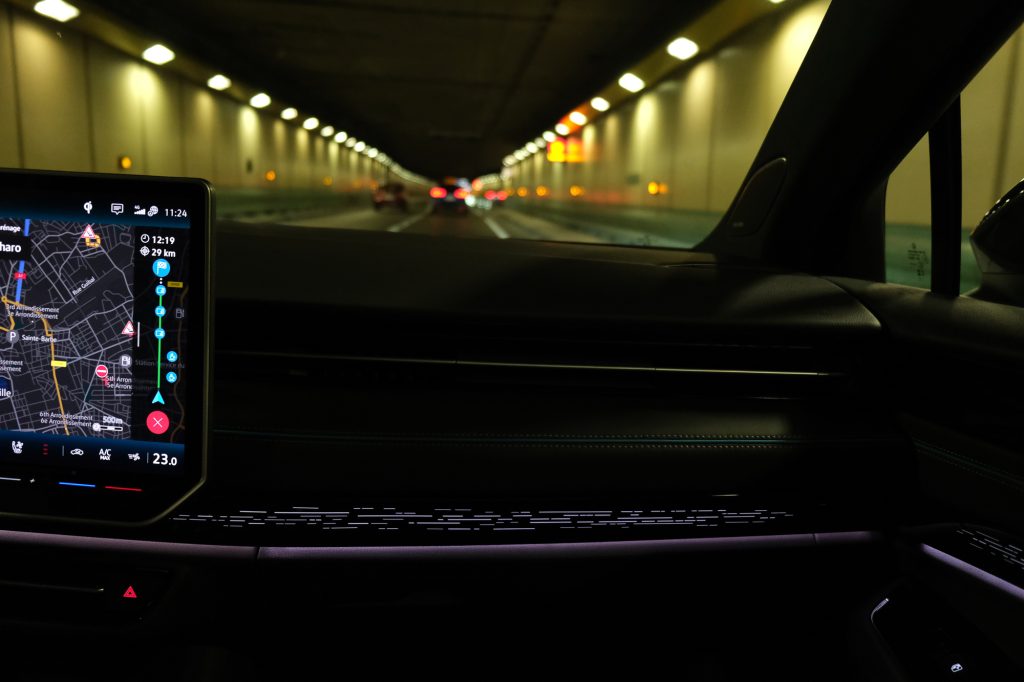
Volkswagen was keen to discuss the ID.7’s new autonomy features, including automatic lane change and speed limit-aware cruise control — but know now that neither feature is coming to the US. We couldn’t get the automatic lane change to work, and other drivers on the launch were similarly flummoxed by it. The speed limit-aware cruise control does work, arguably a little too well, as it rather abruptly decelerates when the speed limit in a given area goes down (which happens a lot in the south of France). I’d probably turn it off if were I driving this car daily.
All versions of the ID.7 at launch will share an 82 kWh battery (77 kWh available), which VW says is good for an impressive 386 miles on the European WLTP cycle. There are no EPA figures yet, but you can reasonably assume they’ll be a bit lower. As for validating VW’s claims, we had far too little seat time to tell — and we certainly weren’t hypermiling it. For those maximizing their efficiency with regenerative braking, the ID.7 offers the same “B” drive mode on the gear selector stalk to put the car in regen mode as other ID models. It’s not a one-pedal mode, and the level of regen force can’t be adjusted — you either use “D” or “B.” What’s unintuitive about all this is that moving between the “comfort” and “sport” drive settings also clearly affects the regen setting, with the latter very noticeably increasing it. This is needlessly confusing for owners — a global regen setting would make much more sense. We did not have a chance to test the 175kW DC charging claim on the press drive, but like the rest of the ID family, the ID.7 uses a CCS connector. Volkswagen has not yet announced plans to adopt NACS, either.
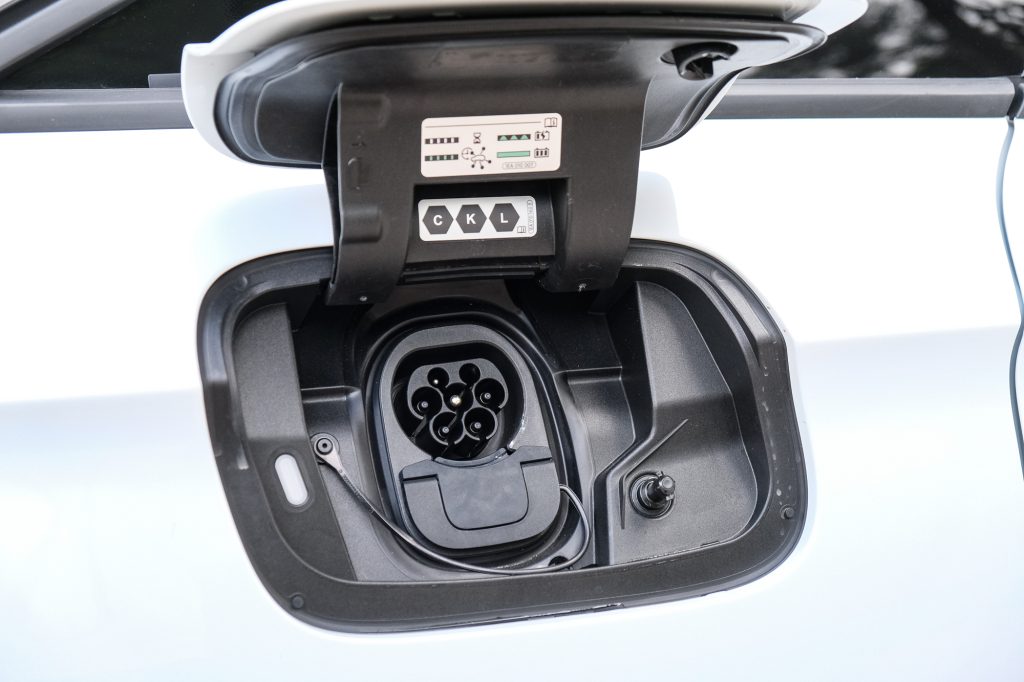
A quieter, more efficient drivetrain: The AP550
The ID.7 is among the first of VW’s EVs equipped with a new electric powertrain, dubbed the AP550, so named because it produces around 550 Nm of peak torque. This unit is substantially more potent than the previous powerplant in the ID family, and is already available in the VW ID.4 and ID.5. But power is plainly not the story, at least in this single-motor configuration.
The AP550’s improved efficiency was evident when VW introduced the motor on the ID.4 and ID.5 SUVs. But because the ID.7 is a proper sedan, its low profile cuts through the air substantially better than those crossovers, giving it 386 miles of range on the WLTP cycle. That’s more than a 10% gain on the ID.4 with the same battery and drivetrain.
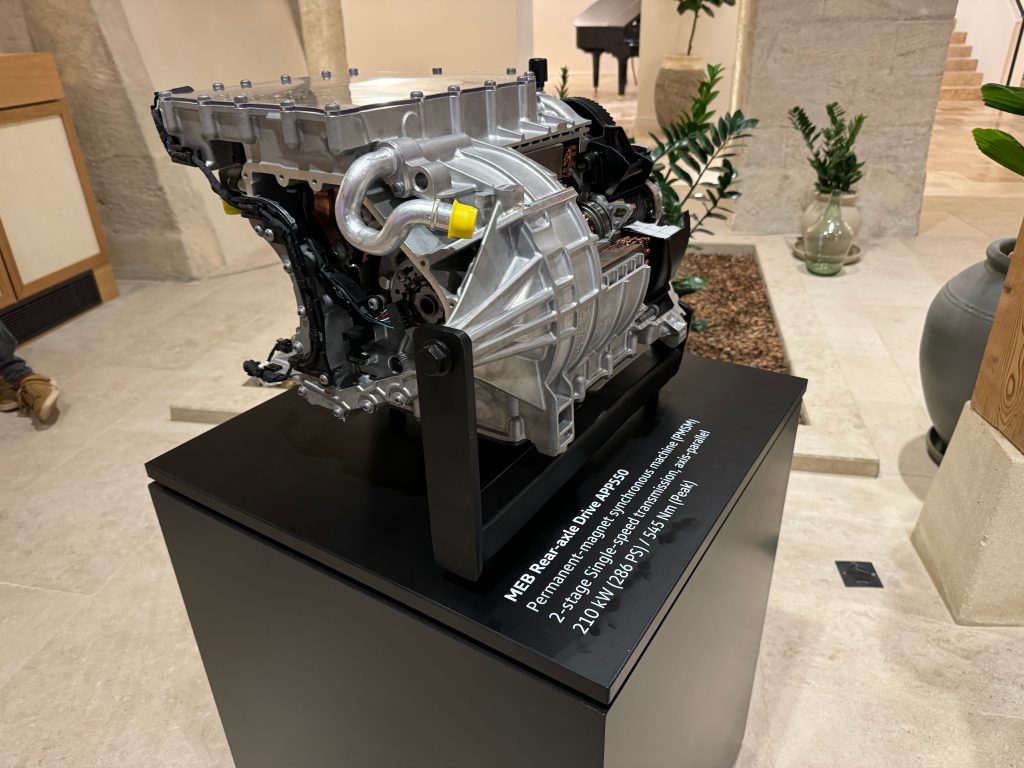
The AP550 is VW’s quietest electric power unit to date, and I can confirm that, even from a stop with the pedal to the floor, I could never hear it. It’s that quiet. VW says that the primary improvements to the power unit, aside from much beefier windings and electrics to increase output, came in the form of cooling, mechanical efficiency, and an upgraded chipset. The AP550 uses water and oil cooling to keep the unit at optimal operating temperature, and the components translating that power to motion are more finely machined to reduce friction. Finally, a newer, more powerful Infineon real-time chipset enables smoother power delivery and more efficient switching.
In the vacuum of a press drive, it’s difficult to assess an EV powertrain’s comparative “refinement” — almost all of them are smooth and quiet! And without other cars on hand to compare, it’s tough to say how much quieter and smoother the AP550 is. The place my imagination goes with this unit is jamming two of them into a single car making 550-plus horsepower. We can dream.
The Pros
- Oodles of tech and comfort. The ID.7 is the definition of a well-equipped mid-size sedan.
- If range claims stand up (386 miles WLTP), the ID.7 delivers noteworthy efficiency, especially given its battery capacity (77 kWh available) and weight (4788 lbs).
- A roomy interior with lots of passenger space front and rear and an ample hatchback-style trunk with folding seats.
- Forthcoming Touring (wagon) version for even more storage (sadly, it’s not coming to the US).
- The “augmented reality” driver heads-up-display is legitimately helpful and handy. It just makes driving nicer.
The cons
- Options like the pano roof and premium seats seem likely to ratchet up the price quickly — but we don’t know what the ID.7 will cost yet, or what trims will be available at launch.
- The ID.7 Pro is not slow, but it’s not fast. If you want performance, wait for the all-wheel-drive GTX.
- This is a large vehicle, outsizing both the Arteon and Passat. Still, it’s smaller than an EQE or i5.
- It may have all the technology, but not all of it feels perfectly executed (ADAS, voice assist, wireless charging).
- Exterior styling is somewhere between bland and awkward. Your mileage may vary, though.
Electrek’s Take
The ID.7 is hard to place in the larger EV discussion without a price. Particularly, without the base model MSRP, it’s difficult to say how much value Volkswagen will deliver relative to the competition dollar for dollar.
The upshots with the ID.7 are clear: This is a comfortable, practical, family-ready BEV with extremely respectable range and a roomy, high-tech interior that feels next-generation. I think Volkswagen has nailed the essential Volkswagenness of a nice mid-size car here — because even if you strip away the panoramic roof, fancy seats, and big wheels, you won’t lose any of what makes the ID.7 a good car. (Though, I’d be seriously lusting after those ErgoActive seats. I’m still thinking about them.) It still has the range, the fast charging, the storage, and the cushy ride. Probably even more cushy if you drop these 20″ wheels for the standard 19″ alloys.
In an age of crossovers, I also have to give VW props for putting out an honest-to-God sedan. I love a good sedan, and while CUVs and SUVs have their place in the world, I like being (relatively) low to the ground! When you actually provide the necessary interior space for adults to fit into a sedan layout, you aren’t losing anything but an inch or two of ground clearance, either (especially given EVs have no drivetrain or exhaust components hanging off the bottom). I will always be rooting for team sedan over team crossover.
My unrepentant shilling for Big Sedan aside, life as a new sedan isn’t an easy one right now. People are buying CUVs and SUVs in droves, and sedan sales have been flagging for years. While Tesla continues to do well with the Model 3, it’s an outlier — largely due to super-aggressive pricing and the extensive Supercharger network. The ID.7 doesn’t make a great analog in that sense. And because of its size class and level of available premium options, it’s conceivable the ID.7 may end up in something of a “no man’s land” — too expensive for the masses, but too Volkswagen for buyers looking at traditional luxury brands like Mercedes, BMW, or Audi. The Arteon has ostensibly struggled to sell for very similar reasons. Granted, the Arteon is not an EV.
To me, the question with the ID.7 isn’t whether it’s a good car — it quite plainly is a Very Good Car. The question is, who will buy one? I’m not sure Volkswagen knows the answer to that any better than we do at this point. Anyone who checks out an ID.7 will be pleased with what they find, but I suspect getting them into the driver’s seat in the first place will be VW’s biggest challenge.

Author: David Ruddock
Source: Electrek



